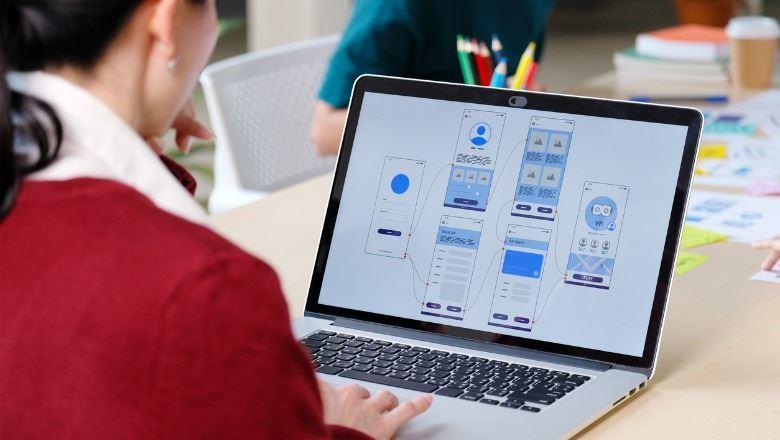In the digital age, user experience (UX) is paramount. A well-designed website not only attracts visitors but also keeps them engaged and encourages conversions. Conducting usability tests is an essential part of the website design and improvement process. These tests help identify usability issues and areas for improvement, ensuring that users can navigate your site effortlessly. In this blog, we will explore best practices for conducting a website usability test to optimize user experience and achieve your business goals.

1. Define Clear Objectives
Before you conduct a usability test, it’s crucial to establish clear objectives. What do you want to learn from the test? Some common objectives include:
- Identifying Navigation Issues: Determine whether users can easily find the information they seek.
- Assessing Task Completion: Evaluate how effectively users can complete specific tasks, such as making a purchase or filling out a form.
- Gathering User Feedback: Collect insights on users’ perceptions of the site and their overall experience.
Having well-defined objectives will guide the entire usability testing process and ensure that you collect relevant data.
2. Choose the Right Participants
Selecting the right participants is vital for obtaining meaningful results. Consider the following:
a. Target Audience
Identify users who closely match your target audience. This will help you gather insights from individuals who are likely to use your website.
b. Sample Size
Aim for a sample size that allows for reliable results. Generally, 5-10 participants can reveal most usability issues. However, consider testing with more users if your website has diverse audience segments.
c. Recruitment Methods
Utilize various methods to recruit participants, such as social media outreach, user testing platforms, or in-person invitations. Offering incentives like gift cards or discounts can encourage participation.
3. Create Realistic Tasks
To effectively assess usability, develop realistic tasks that reflect common user goals. These tasks should be specific, clear, and relevant to your website. Here are some tips for creating effective tasks:
a. Focus on Key Actions
Identify the primary actions you want users to take on your site, such as signing up for a newsletter or finding a product. These actions should align with your usability testing objectives.
b. Use Natural Language
Phrase tasks in a way that users would naturally express their needs. For example, instead of saying “Locate the contact page,” you might say, “Find the phone number for customer support.”
c. Limit the Number of Tasks
Avoid overwhelming participants with too many tasks. Focus on 5-10 key tasks that will provide valuable insights without causing frustration.
4. Choose the Right Testing Method
There are several methods for conducting usability tests, each with its advantages. Consider the following options:
a. Moderated vs. Unmoderated Testing
- Moderated Testing: Involves a facilitator who guides participants through the test, asking questions and prompting discussion. This method allows for real-time feedback and clarification.
- Unmoderated Testing: Participants complete tasks independently, often using remote testing tools. This approach allows for more participants and can save time but lacks immediate interaction.
b. In-Person vs. Remote Testing
- In-Person Testing: Conducted face-to-face, allowing for direct observation of participant behavior and non-verbal cues.
- Remote Testing: Participants test the website from their own devices, providing flexibility and access to a broader audience.
Choose a method that aligns with your objectives, budget, and timeline.
5. Prepare the Testing Environment
Creating a conducive testing environment is essential for collecting reliable data. Consider the following:
a. Technical Setup
Ensure that the testing environment is set up correctly. For in-person tests, check that all equipment (laptops, cameras, microphones) is functioning. For remote tests, ensure that participants have access to the necessary software.
b. Minimize Distractions
Create a quiet, comfortable environment free from distractions. For remote tests, remind participants to choose a suitable location.
c. Brief Participants
Before starting the test, explain the purpose of the session, the tasks they will be performing, and what you expect from them. Encourage them to think aloud while completing tasks to capture their thought processes.
6. Record and Analyze Data
Collecting data during usability tests is crucial for identifying areas for improvement. Consider the following methods for data collection:
a. Observational Notes
Take detailed notes during the test, focusing on participant behavior, challenges faced, and overall impressions. Note any comments made by participants that provide insight into their experience.
b. Screen Recordings
Use screen recording software to capture participants’ interactions with the website. This allows you to review their actions later and identify specific pain points.
c. Post-Test Surveys
Administer surveys after the test to gather additional feedback. Ask participants about their overall experience, satisfaction, and any suggestions for improvement.
7. Synthesize Findings and Make Recommendations
After conducting usability tests, it’s essential to synthesize your findings and present actionable recommendations. Follow these steps:
a. Identify Patterns
Analyze the data collected to identify common issues and patterns across participants. Look for trends in navigation difficulties, task completion rates, and user feedback.
b. Prioritize Issues
Not all usability issues are equally important. Prioritize them based on their impact on user experience and business goals. Focus on addressing high-impact issues first.
c. Create a Report
Compile your findings into a comprehensive report that outlines the identified issues, supporting data, and recommended solutions. Share this report with relevant stakeholders to inform future website improvements.
8. Iterate and Test Again
Usability testing should be an ongoing process. Once you implement changes based on initial tests, conduct further testing to evaluate the effectiveness of those changes. Continually iterate and refine your website to enhance the user experience over time.
Conclusion
Conducting a website usability test is a vital step in optimizing user experience and ensuring your site meets the needs of your audience. By defining clear objectives, choosing the right participants, creating realistic tasks, and following best practices for testing, you can uncover valuable insights that drive meaningful improvements.


No responses yet